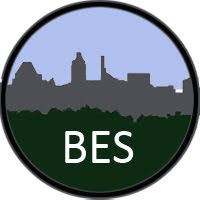Baltimore, like most American cities, has enormous spatial differentiation by race and class. These large social differences from place to place unfairly expose different racial groups and economic classes to environmental hazards, pollution, or risks. Over the past two decades, Baltimore Ecosystem Study (BES) researchers have documented the legal, formal, and informal mechanisms of the policies and practices that have resulted in the seemingly entrenched patterns we see today.
Recent research includes:
- The National Housing Act of 1934 was a federally chartered program of mortgage support for lower income Americans. Redlining, an associated policy with the intentional effect of denying this help to African American households (primarily), was implemented concurrently in more than 200 cities in the U.S., including Baltimore. This practice promoted pervasive and persistent legacies in Baltimore associated with property values, abandonment and vacancy, and investment in public and private environmental amenities. Although redlining itself is not the sole driver of today’s patterns of inequity in Baltimore, it has been a major indicator of environmental injustice and BES research is discovering new complexities in how redlining has played out in the city
- The abandonment and vacancy of some of Baltimore’s neighborhoods generates inequitable exposure to mosquitoes. There are up to three times more biting mosquitoes in neighborhoods where abandoned buildings and vacant lots offer substantial breeding habitat. In addition, there are more mosquitoes carrying West Nile virus in lower income neighborhoods and they are larger-bodied, indicating that they could be more efficient at transmitting diseases.
- Green infrastructure (GI), including such things as trees and tree canopy, some grassy areas, vegetated riparian fringes, and landscaped stormwater mitigation installations, is silently assumed to be good everywhere and for all people. Is this the case? BES researchers examining the situation on the ground in Baltimore have found that the GI is often actually an environmental burden in some communities. A failure to fully engage the community on GI projects and post-installation maintenance are two contributing factors. Further, an examination of the green infrastructure plans in Baltimore and 19 other cities shows that environmental equity is a stated concern in more than 75% of cases. However, in few cities are there teeth for enforcing or resources for supporting the equity of green infrastructure installations. The equity goals of GI are most often unfulfilled, in spite of their promise for enhancing community.
Selected publications
Bodner, D., LaDeau, S. L., Biehler, D., Kirchoff, N., & Leisnham, P. T. (2016). Effectiveness of print education at reducing urban mosquito infestation through improved resident-based management. PLOS One, 11(5). doi: 10.1371/journal.pone.0155011
Grove, M., Ogden, L., Pickett, S., Boone, C., Buckley, G., Locke, D. H., … Hall, B. (2018). The Legacy Effect: Understanding How Segregation and Environmental Injustice Unfold over Time in Baltimore. Annals of the American Association of Geographers, 108(2), 524–537. doi: 10.1080/24694452.2017.1365585
Jordan, R. C., Sorensen, A. E., & Ladeau, S. (2017). Citizen Science as a Tool for Mosquito Control. Journal of the American Mosquito Control Association, 33(3), 241–245.
Katz, G., Leisnham, P. T., LaDeau, S. L. (2019) Aedes albopictus Body Size Differs Across Neighborhoods With Varying Infrastructural Abandonment, Journal of Medical Entomology, tjz170, https://doi.org/10.1093/jme/tjz17
Little, E., Biehler, D., Leisnham, P. T., Jordan, R., Wilson, S., & LaDeau, S. L. (2017). Socio-Ecological Mechanisms Supporting High Densities of Aedes albopictus (Diptera: Culicidae) in Baltimore, MD. Journal of Medical Entomology, 54(5), 1183–1192. doi: 10.1093/jme/tjx103



